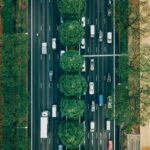The Rising Tide Of School Choice
As we get closer to the Fall and the start of the new school year, everyone is debating how to approach educational recovery. Students have fallen behind as a result of virtual learning, and schools are having to revamp their curriculums, teaching methods, and staff to accommodate students that may be ill-equipped for in-person learning after all of this time at home. Certain states have leaned into their public schools, making massive monetary investments into the infrastructure that already exists, but other states have taken a different approach.
It’s no surprise that the pandemic revealed the shortcomings of the public school systems in many states. Not to mention how the the power of teachers’ unions took center stage. What’s surprising is how many states have continued to invest in those failing systems without a clear plan that benefits their future students. However, some states have taken the initiative to invest in their students instead of the public school system, and the number of states willing to do so has increased exponentially since the beginning of the pandemic.
As it stands right now, nearly half of Americans favor an approach to education where public school is not the only option. State legislatures took that statistic and ran with it – implementing new Education Savings Account (ESA) programs, expanding existing tax-credit programs, and creating scholarship programs for high-need students. These states show the first real-time results of the pandemic and confirm predictions that many had about how the education landscape needed to change before the pandemic was ever an issue.
One of the most innovative new laws came out of Georgia, where students can now participate in learning pods; a method in which small groups of children come together to learn and socialize with one another. In some cases parents of the children will rotate teaching the group or they will hire an instructor This method became very popular during the pandemic, as keeping to small groups minimized risk, but allowed children to continue to learn social skills with other children their age in an academic setting.
Once pods grew in popularity in Georgia, some policymakers attempted to implement regulations on the groups, ultimately defeating the purpose of the grassroots, homeschool-like learning opportunity. In response, Georgia passed the Learning Pods Protection Act, which ensured that learning pods would not be subject to over-regulation that limits the intended flexibility of the method.
This victory in Georgia was not the only significant gain for school choice. Six states enacted new school choice programs starting July 1st and fourteen existing voucher and tax-credit scholarship programs were expanded across the country. These programs varied from directly benefiting special needs and low-income students in some states, to widely benefitting all students in other states, but all indicate the rising tide of school choice. Giving power back to parents and students has never been more popular. It’s clear that the movement away from the public school system and towards school choice is happening – and at a much quicker rate than anyone anticipated.




